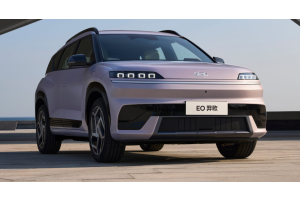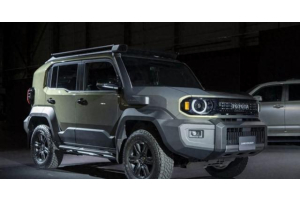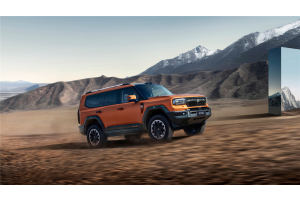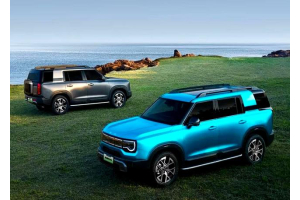页面 6 - Market Analysis
-
四月 20, 2025
2025 Top 10 Best-Selling Chinese Electric Vehicles: Comprehensive Market Report
China's EV Market Hits Historic Milestone
2025 marks a watershed year for China's new energy vehicle industry, with pure EV sales reaching 5.945 million units, representing 38% year-on-year growth. Electric vehicles now account for 54% market penetration in China's passenger car sector, driven by fierce competition among domestic brands and the rapid emergence of new players.
Annual Sales Ranking & Key Models
Rank Model Annual Sales (10k units) Segment USP 1 Tesla Model Y 48 Compact SUV Performance, Autopilot, Supercharger network 2 BYD Seagull 45 Mini EV Blade Battery, safety, space, fast charging 3 BYD Yuan PLUS 27 Compact SUV Powerful configurations, premium features 4 Wuling Hongguang MINI EV 26 Micro EV Affordable pricing, flexible space, trendy design 5 Wuling Bingo 21 Small EV Retro design, spacious interior, female-friendly 6 Xiaomi SU7 13.9 Midsize Sedan Smart ecosystem, home-car integration 7 Zeekr -
四月 17, 2025
Chery's Tech Breakthrough and Global Strategy: Rapid Growth Creates New Energy Opportunities
As China's new energy vehicle (NEV) industry transitions from policy-driven to market-driven, a silent technology revolution is accelerating. Chery Automobile, with its bold declaration of "No Mercy in NEV Competition," achieved 171.8% year-on-year growth in Q1 2025, with cumulative NEV sales exceeding 163,000 units, officially joining the industry's first tier as one of the fastest-growing mainstream brands. This success stems from both concentrated technological innovation and precise understanding of user needs and global trends.
Three-Pillar Strategy: Technology + Product + Globalization
1. Innovation-Driven Technological Advancement
- Platform Technology Matrix: Chery developed the Super Hybrid Platform and E0X High-Performance Electric Platform, supporting three powertrain solutions: hybrid, range-extender, and pure electric.
- Full-Stack R&D & Smart Systems: Created CHERY-OS intelligent operating
-
四月 17, 2025
Why BMW Mini Suspended EV Imports from China to the U.S. – Key Impacts
BMW's Mini brand has halted plans to introduce two China-made electric vehicles (EVs) – the Aceman compact crossover and an electric convertible – to the U.S. market. This decision stems from high U.S. tariffs on Chinese EVs, cooling consumer demand, and escalating trade tensions between Washington and Beijing.
Trade Policy & Tariff Barriers
- 25%+ tariffs on Chinese-made EVs under Biden administration policies made the imports commercially unviable.
- Potential new tariffs announced by the Trump campaign created additional uncertainty for automakers.
- Mini's U.S. VP Peyton confirmed that local production in South Carolina wasn't feasible due to low projected sales volume and lack of local supply chains for these models.
Market Consequences
- Dealers like those in Portland expected 35% annual sales growth from these EVs, now lost.
- No immediate replacement for discontinued two-door Mini EVs, creating a product gap.
Strategic
-
四月 15, 2025
Stellantis Q1 2025 Performance Report: Key Insights for Global Buyers
Global Deliveries Decline Amid Regional Shifts
Stellantis reported a 9% year-over-year decrease in global vehicle deliveries for Q1 2025, with approximately 1.2 million units sold worldwide. While facing challenges in established markets, the automaker demonstrated resilience in emerging economies.
Regional Performance Breakdown
North America: Production Challenges Offset by Strong Models
The North American market saw a 20% delivery decline (82,000 fewer units), primarily due to extended factory shutdowns during January holidays and production ramp-up for the new Ram Heavy Duty trucks. However, several models outperformed the market:
- Jeep Compass and Grand Cherokee
- Ram 1500/2500 series
These vehicles achieved over 10% sales growth despite overall market contraction.
Europe: Market Share Gains Amid Transition Period
European deliveries fell 8% due to product renewal cycles for small vehicles and weakening commercial van
-
四月 14, 2025
Foxconn's Ambitious EV Partnership Plans with Japanese Automakers
Strategic Collaboration in Electric Vehicle Manufacturing
In a recent development that could reshape the Asian electric vehicle landscape, Foxconn has revealed its intentions to collaborate with major Japanese automakers. Jun Seki, Chief Strategy Officer of Foxconn's EV division, shared these plans during a Tokyo seminar covered by TopUsedCars.com reporter Calvin Zhang.
Key Partnership Opportunities
Foxconn sees particular synergy with Nissan, though formal discussions haven't yet begun. The Taiwanese manufacturing giant believes strategic alliances with Japanese manufacturers including Honda, Nissan, and Mitsubishi Motors could create powerful opportunities in the competitive EV market.
Current Negotiations Progress
The company has advanced to final-stage talks with Mitsubishi Motors regarding EV supply agreements. Industry sources suggest Mitsubishi may outsource production of Oceania-market EVs to Foxconn, indicating
-
四月 13, 2025
BYD Achieves Record Export Growth in Q1 2025 - Full Model Breakdown
March 2025 Export Performance Highlights
BYD continues its global expansion with remarkable 89.2% year-on-year growth in overseas sales, delivering 72,000 vehicles in March alone. This represents an 8.5% increase over February 2025 figures, demonstrating consistent monthly growth.
Top Performing Models (March 2025 Exports)
1. Song Plus
20,620 units exported in March
70,014 units Q1 total (BYD's top export model)2. Song Pro
7,900 units exported in March
18,534 units Q1 total3. Seal 07 EV
7,200 units exported in March
19,888 units Q1 total4. Seagull
7,013 units exported in March
19,461 units Q1 total5. Yuan Plus
4,320 units exported in March
17,869 units Q1 total6. Yuan UP
4,034 units exported in March
13,013 units Q1 total7. Seal EV
3,180 units exported in March
8,044 units Q1 total8. Destroyer 05
3,168 units exported in March
8,709 units Q1 total9. BYD e6
2,519 units exported in March
7,077 units Q1 total10. Dolphin
-
四月 12, 2025
Shacman Commercial Vehicles Achieves Stellar Q1 Performance with 43% Growth
Strong Start to 2024 with Diversified Product Success
Shacman Commercial Vehicles has delivered an impressive 6,827 units across its product portfolio in Q1 2024, marking a substantial 43% year-over-year increase. This outstanding performance sets a positive trajectory for the company's annual targets.
Electric Vehicle Division Emerges as Market Leader
The company's strategic focus on new energy vehicles has yielded extraordinary results:
- EV sales skyrocketed to 2,595 units, representing 1,053% growth compared to Q1 2023
- Captured 8.4% market share in China's commercial EV sector (Jan-Feb period)
- Ranked among top 3 manufacturers in domestic EV commercial vehicle segment
Continuous R&D investment has enabled Shacman to develop competitive green transportation solutions that meet evolving market demands for sustainable logistics.
Traditional Segments Show Consistent Growth
Light Truck Business Expansion
The light
-
四月 11, 2025
Chinese Vehicle Exports to Europe: Key Markets, Tariffs & Import Procedures
Europe's Top Import Hubs for Chinese Vehicles
Belgium: Europe's Primary Gateway
Belgium maintains its position as the leading entry point for Chinese vehicles entering Europe. Between January and August 2024, Belgium imported over 180,000 Chinese vehicles, ranking fifth globally among China's auto export destinations. The strategic ports of Antwerp and Zeebrugge handle this massive volume, though recent EU tariff implementations have slightly moderated growth.
Netherlands: The Transit Powerhouse
The Netherlands witnessed a dramatic surge in Chinese vehicle imports, with values jumping from €0.1 billion in 2022 to €1.1 billion in 2023. Notably, about two-thirds of Chinese EVs entering the Netherlands are destined for other European markets. When excluding transit trade, China ranks as the fourth largest vehicle supplier to the Dutch market.
EU Import Trends: China's Growing Dominance
- 781,980 Chinese vehicles imported
-
四月 10, 2025
Global Automotive Culture: A Diverse Landscape of Regional Specialties
China's Automotive Industry Rise
The Chinese automotive industry has experienced remarkable growth in recent years, producing several globally competitive brands. China has become the world's largest vehicle exporter, with passenger car exports growing from 500,000 units in 2014 to 1.7 million units in just the first three quarters of 2022.
Major Chinese Automotive Brands:
- FAW (First Automotive Works)
- Great Wall Haval
- Geely (owns LEVC, Lynk & Co, Polestar, Proton, Lotus, and Volvo)
- BYD (global leader in electric vehicles)
- Changan (including Changan Oshan, Changan Kaicheng sub-brands)
- Chery
- SAIC Motor (including Roewe, MG)
- Dongfeng (including Venucia, Forthing, Fengon)
- BAIC Group
- Hongqi (premium brand)
European Automotive Excellence
German Engineering
Germany remains the global benchmark for automotive engineering with these premium brands:
- Mercedes-Benz (including Smart)
- BMW Group (including Rolls-Royce, MINI)
- Volkswagen
-
四月 05, 2025
U.S. 25% Auto Tariff Impact: Key Insights for Global Car Buyers and Dealers
How the New U.S. Tariffs Affect Chinese Automakers
While Chinese finished vehicle exports to the U.S. remain limited (approximately 116,000 units in 2024, primarily from American brands like GM and Ford), the real pressure falls on auto parts suppliers. China's auto component exports to the U.S. have been declining, with $8.33 billion shipped between January-November 2024, accounting for 10.6% of total U.S. auto parts imports. Chinese suppliers must now increase North American localization and U.S. sourcing to mitigate tariff impacts.
Major Challenges for Japanese, Korean and German Manufacturers
Japan (1.37 million units), Korea (1 million units) and Germany (550,000 units) face direct export reductions of 270,000, 200,000 and 160,000 vehicles respectively. These automakers now struggle to balance volume and profitability, forced to either raise prices or accelerate U.S. production - potentially leading to industrial





